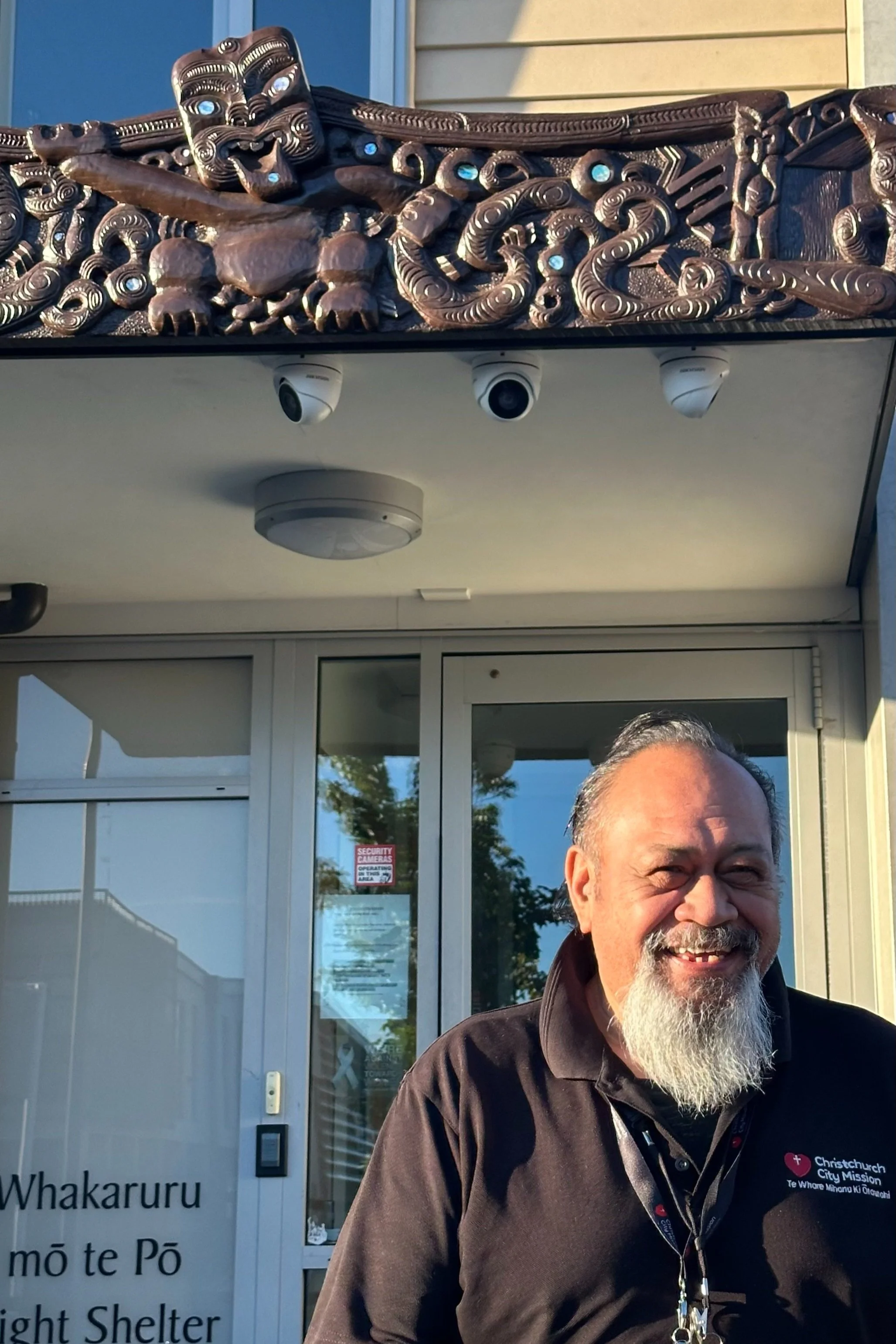Carving gives message of hope
The whakairo guards the entrance to the men’s day programme and emergency shelter.
Phil will never forget the night he arrived to work at the Mission and looked up and saw a sight that left him exhilarated and moved. Across the entrance to the men’s emergency night shelter was a beautiful whakairo which he had stored in safekeeping for more than a decade.
“Honestly, I just stood there for ages looking at it, looking up in awe. I still look at it and can’t believe it is there,” he says. “It has been the ultimate gift.” Phil is one of our respected and long-serving staff and he looks after homeless men staying in our emergency accommodation on the midnight to morning shift. He took charge of the carving and put it in safekeeping a decade ago when the old shelter was demolished after the quakes. There is a power in this carving that many at the City Mission feel, but find hard to explain. It’s almost as if it lives alongside the staff and residents, is how Phil puts it.
Our shelter whakairo’s story goes back to the late 1980s when it was carved from a piece of totara gifted by Murray Thacker from the Okains Bay Museum.
Carver Karl completed the refurbishment for the carving’s second era.
A very happy Phil is delighted the carving is back where it belongs.
The carver was Karl Ward (Ngai Tahu) who stayed at the night shelter himself in the early 1980s, so there was already an association with the Mission. Karl also did the recent refurbishment. It becomes more apparent why it is special when Karl explains what you are seeing. The carving is a pare, a door lintel, which marks the threshold of a living place and passing under it things change. It demands respect from those who enter. The lines at the top are the shelter, and at each end facing out are kaitiaki – guardians. The centre figure has outstretched arms and the figures on the left are happy, they know where they are going in life. Those on the right are distorted figures representing lost people, and the arm is pulling them towards the others and into the shelter.
In the top left of the whakairo is a cross and humans underneath it, which represents the City Mission and people coming together. This carving represents the positive change we work so hard to help happen and the hope we have for our whanau when they come to us.



